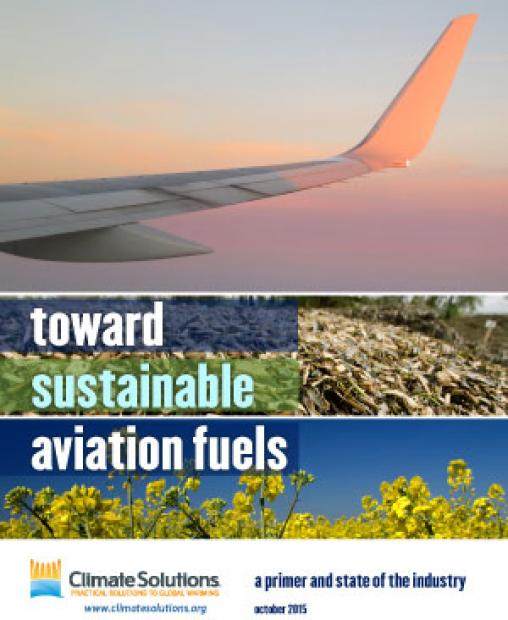“Are we there yet?!” Anyone with kids (or who has ever been one) will recognize this plaintive cry from the back seat. It’s hard not to become impatient while waiting to arrive at a desired destination. And it’s almost impossible to avoid impatience when faced with the overwhelming climate imperative to replace fossil fuels with cleaner and lower-carbon alternatives.
This is particularly true for the critical challenge of making flying more climate-friendly. Commercial planes need liquid, high-energy-density fuels to fly. The industry has made huge strides in reducing fuel use over the past decades, and it is worth noting that Alaska Airlines has topped industry efficiency rankings for five years straight, in large part thanks to its decision to operate with a modern fleet of Boeing and Bombardier planes, as well as innovations upgrading its older planes with winglets and reducing fuel use in flight paths, taxiing and other areas.
Airports can help meet climate goals by making important improvements in ground operations, too, and the Port of Seattle is justly proud of making Sea-Tac the first airport in North American to receive international certification for its carbon-reduction efforts.
Aviation is growing rapidly, however, and to truly reduce the sector’s carbon footprint requires developing low-carbon, sustainable alternatives to petroleum-based jet fuels at a commercial scale and a competitive price.

Four years ago, Climate Solutions helped author a groundbreaking stakeholder report, Sustainable Aviation Fuels Northwest: Powering the Next Generation of Flight, that was sponsored by the Port, Alaska, and Boeing among others. The report outlined an ambitious action plan for making our region a world leader in making sustainable jet fuels a reality.
Recently, Climate Solutions completed a new report - Toward Sustainable Aviation Fuels: A Primer and State of the Industry - that provides an update on the significant progress that the aviation industry, biofuel developers, researchers, and others are making and the work that remains to be done. This report makes it clear that while progress can seem agonizingly slow, there are tremendous developments happening around the world and here at home.
So why is today’s announcement from the Port of Seattle, Alaska Airlines, and Boeing significant and worth celebrating? Two of the key conclusions in both Climate Solutions reports are that we must look at the whole supply chain—from developing biomass sustainably, through fuel processing, to getting these fuels into the planes—and we will need partnerships linking government, business and other stakeholders to solve the challenge of decarbonizing the aviation industry.
Today’s agreement signals a commitment to build critical infrastructure that will take locally developed, sustainable fuels, and supply them to the airlines. This will take us one critical step closer to the goal of making Sea-Tac International Airport one of the first places in the world where sustainable aviation fuels become an everyday reality.
“Are we there yet?!?” No, but we’re getting closer every day. We can be increasingly confident that business, government, and nonprofit leaders are committed to working together to reach that destination.




